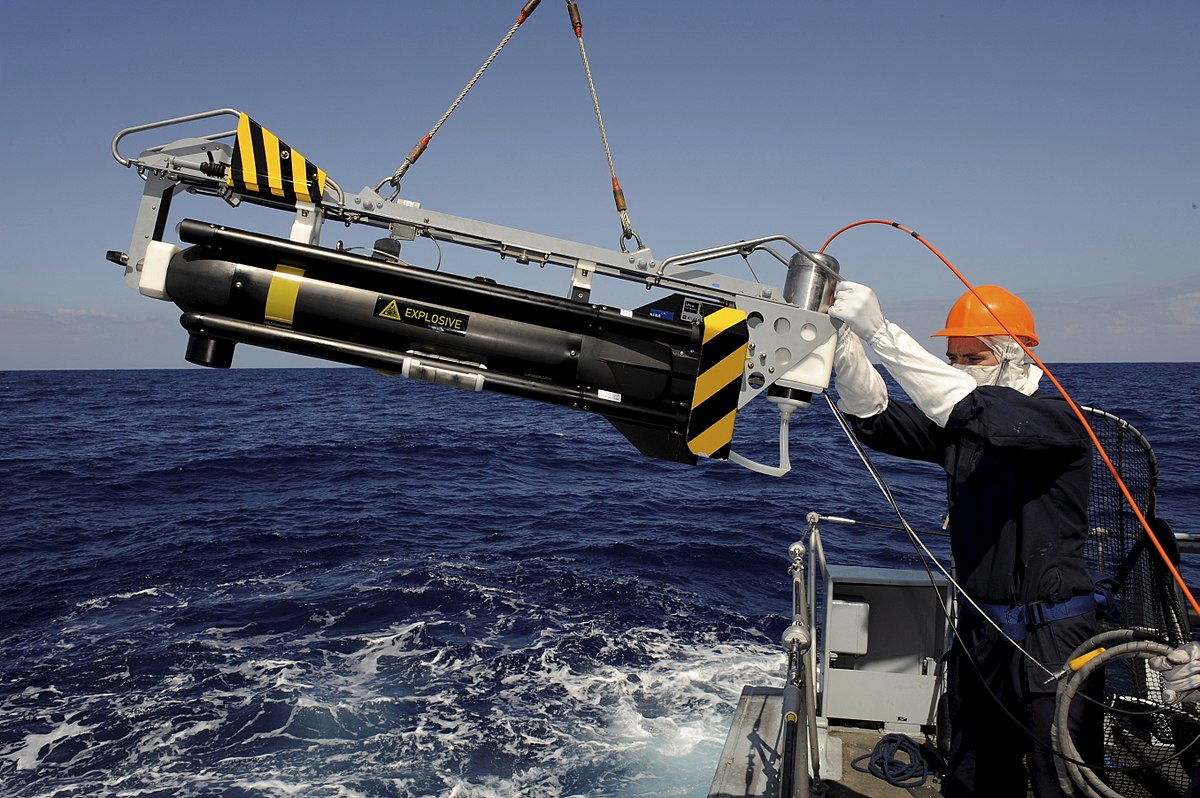Thank you,
@TomS !
Guess I need to add a bit more basic theory.
Old school mines blew up when you physically ran into them. They'd slowly sink a ship because they'd knock a big hole in the side of the ship and let water into the people tank. Depending on the damage, you might be able to patch the hole and keep going, or at least stay afloat long enough to rescue all the crew.
In WW2, people figured out that if you have an explosion below the keel, you can do a lot more damage
because you can break the ship in half. (ship flexes up, and then is only supported at the ends of the hull so it snaps in half into the bubble that the explosion made.) So newer mines are down about 100-200ft or so and blow up well below a ship, catching them in the bubble and breaking the keel. Torpedoes do the same thing.
This means you need a different way of setting off newer mines, since you're not making the ship bump into the physical mine anymore. Things like magnetic influence, engine sound, or even just the pressure from your ship moving through the water. And you can do tricks involving counting how many ships go past that mine before it blows up. And multiples of those triggers, so you're listening for the sounds of a Kresta-2 and going for a random delay count for good measure: that mine will now blow up after the (rolls dice) 6th Kresta-2 it detects.

